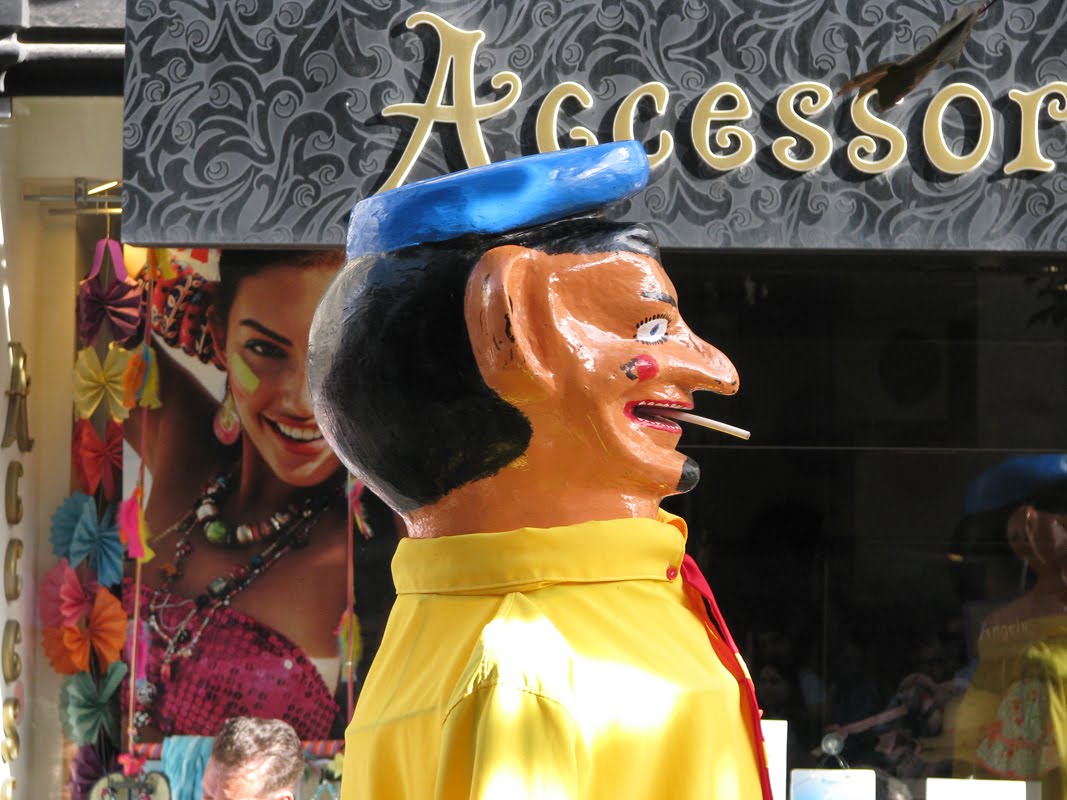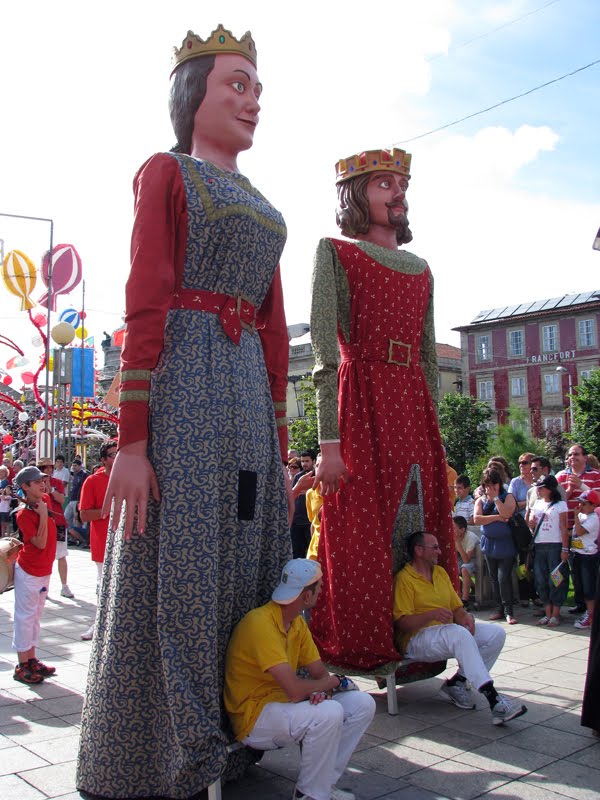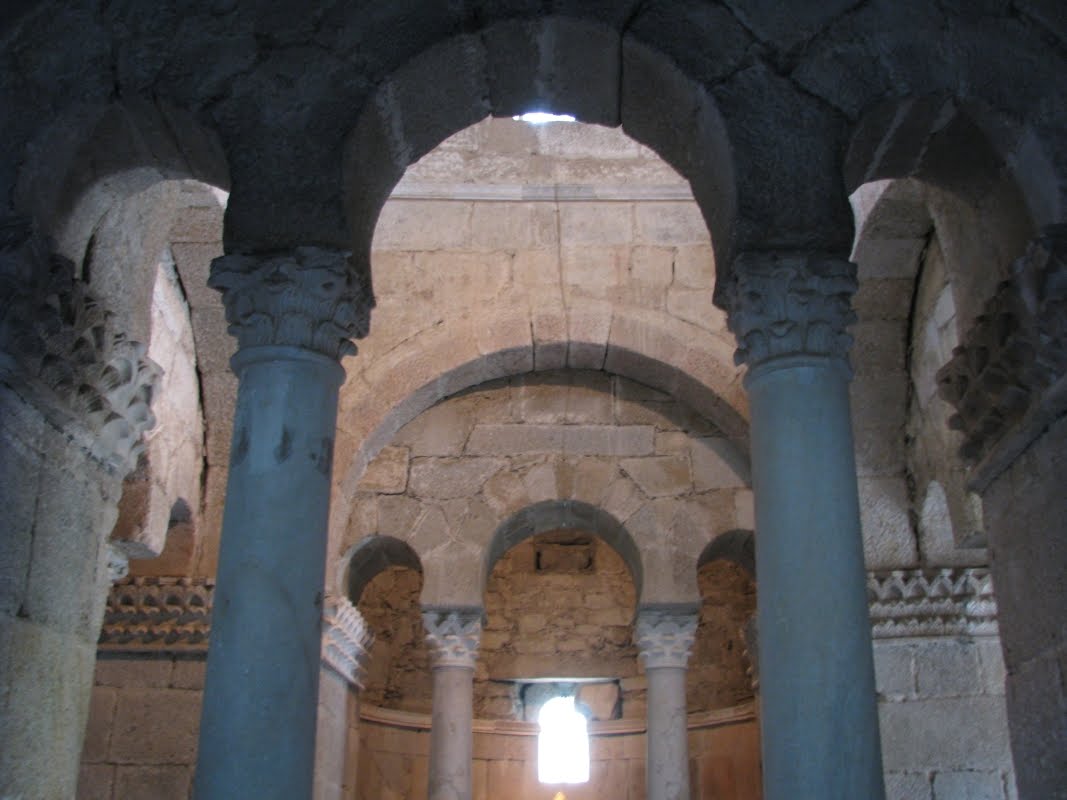Day 105. Braga
XXI Encontro Internacional de Gigantones e Cabeçudos – Ежегодный парад гигантов и «больших голов» в Браге. Некогда христианские процессии с фигурами святых вернулись к своему карнавальному источнику - стали снова похожи на языческие празднества. Время вспять!
Carried giants can be traced back to 18th century Portugal. Originally, Giants appeared in Western Europe to add color and educational value to communal and religious processions. From the 15th century onward, these giant figures were used to illustrate scenes from the bible, tales from the Golden Legend, and epic poems. With time, the Giants changed in meaning and came to represent regions, cities, and neighborhoods. Adapted to ideas of different eras, Giants moved away from processions to become increasingly profane figures used in carnivals, village fetes, and religious festivals, too. (© What is Giant?)
Large figures were carried in annual religious processions to mark occasions such as the day of the town's patron saint. Most were biblical figures like Goliath or St. Christopher, and they gradually acquired various attendants in masks and costumes. The giants were traditionally made of flexible wickerwork, and they could actually dance with the music of the procession. (© Giants and Carnivals)
Grotesque Bighead figures are strongly rooted in the Portuguese popular imagination and, over time, have come to represent stereotypical social types that have remained constant formally and symbolically, and have resisted innovation. (© “Male & Female BIGHEADS: Different ways of looking”)
День 105. Брага
Вестготская Capela Sao Frutuoso. VII-X век. Просто и красиво!









Comments
Post a Comment